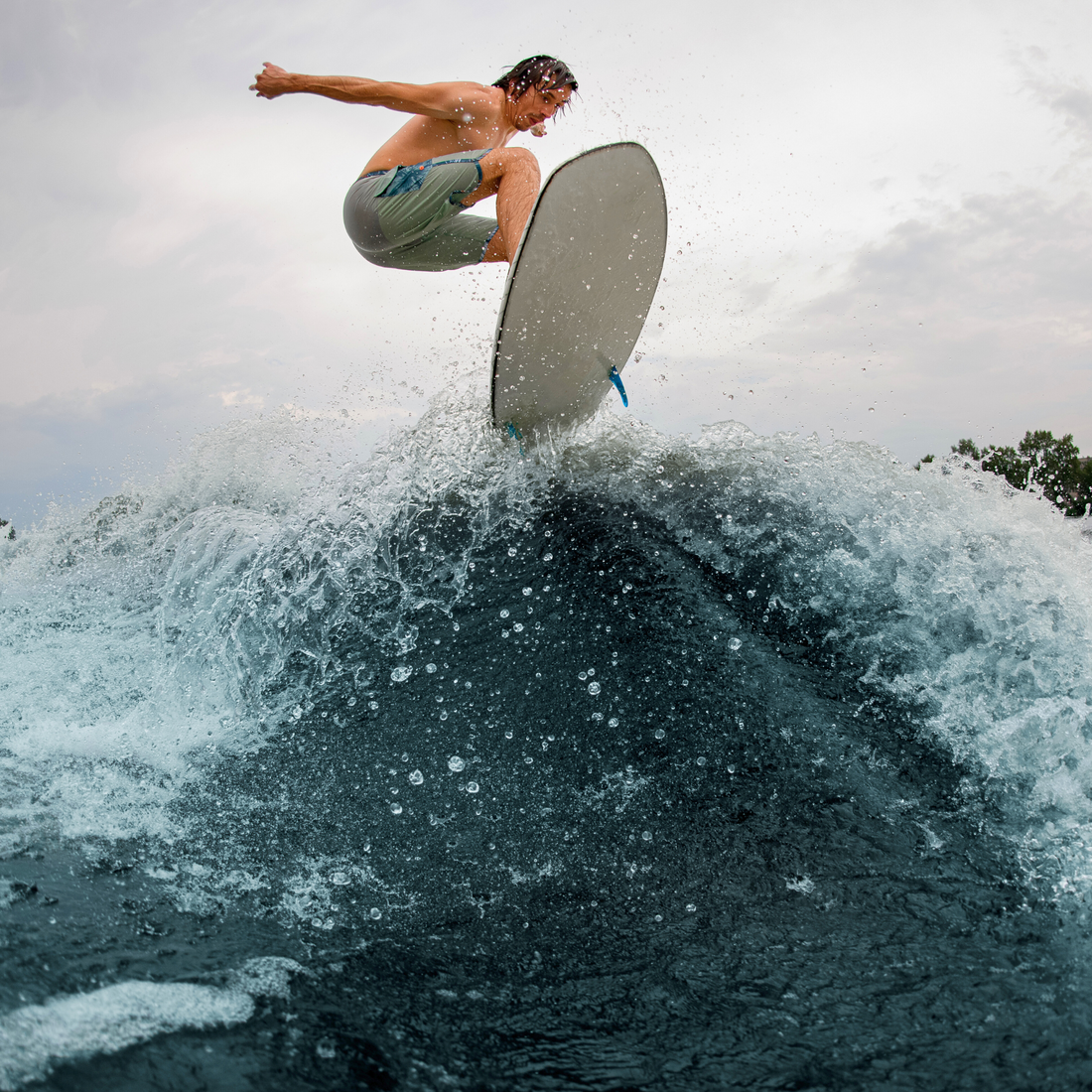
The Science and Craftsmanship Behind Wakesurf Board Manufacturing
Share
Wakesurfing, a popular water sport that merges the balance of surfing with the dynamic propulsion of boat wakes, relies heavily on the design and construction of the wakesurf board. This article provides an in-depth look at the materials, manufacturing process, and design factors that go into producing a high-quality wakesurf board.

Materials Used in Wakesurf Boards
Every wakesurf board is a composite of specific materials, each serving a distinct purpose. The primary components include foam, fiberglass, and epoxy.
-
EPS Foam: This is the core substance of the wakesurf board. Expanded polystyrene (EPS) foam is chosen for its lightweight nature and buoyancy, attributes that contribute to the board's performance on water.
-
Fiberglass: Fiberglass reinforces the EPS foam core, enhancing the board's strength and lifespan. It prevents structural deformations like warping or cracking, providing durability.
-
Epoxy: Acting as a binding agent, epoxy fuses the foam and fiberglass together. It also forms a resilient coating that safeguards the board against environmental and chemical damage.
Wakesurf Board Construction Methods
There are two prevalent methods used in the manufacturing of wakesurf boards: Compression Molding and Resin Transfer Molding (RTM).

-
Compression Molding: This method involves placing the foam core into a mold, covering it with fiberglass, and applying heat and pressure. The process is cost-effective and yields high-quality boards.
-
Resin Transfer Molding (RTM): RTM is a more advanced technique. After the foam core is placed in a mold and covered with fiberglass, resin is injected to bond the materials together. Although pricier than compression molding, this method results in a stronger, lighter wakesurf board.
Design Factors for Wakesurf Boards
The design of a wakesurf board is tailored to individual specifications based on the rider's weight, skill level, and preferred riding style.
-
Rider's Weight: The rider's weight determines the volume of the board. Heavier riders necessitate a board with more volume for enhanced control, while lighter riders may prefer less volume for increased maneuverability.
-
Skill Level: A rider's proficiency also influences board design. Novice wakesurfers might benefit from a wider board with more rocker (curve), promoting balance and wave catching. Conversely, experienced surfers might prefer narrower, less rocker boards for better responsiveness and trick performance.
-
Riding Style: Whether a rider prefers doing tricks or cruising affects the amount of rocker in a board. A higher rocker board is suitable for trick performance, while a board with less rocker is optimized for cruising.
Finishing Touches on Wakesurf Boards
A wakesurf board requires certain enhancements before it's water-ready.
- Grip Pads: These adhere to the deck of the board, providing the necessary grip for riders. They can be customized to fit personal preferences in color and pattern.
- Fins: As vital components of a wakesurf board, fins offer stability, control and impact the overall performance on the water. They can be adjusted or replaced according to the rider's skill level and style.
-
Graphics and Design: The aesthetics of wakesurf boards are personalized with colorful graphics or designs, protected under a layer of epoxy resin to prevent water damage.
Conclusion
Wakesurf boards embody a blend of precise engineering and personalized artistry. Understanding the intricate process behind their creation can enhance appreciation for the sport and help riders make informed decisions when selecting their ideal board. Knowledge of the materials, manufacturing methods, design factors, and finishing touches contribute to the overall wakesurfing experience.

Happy surfing!
